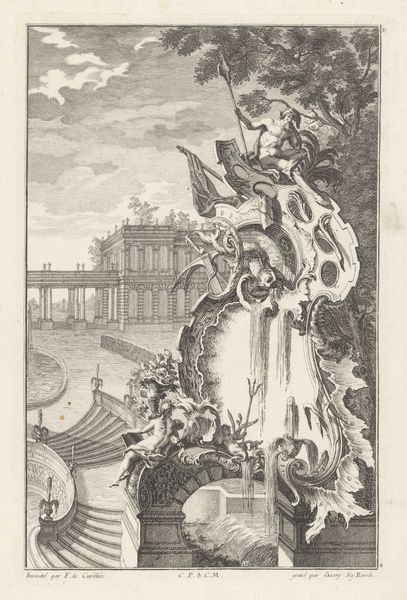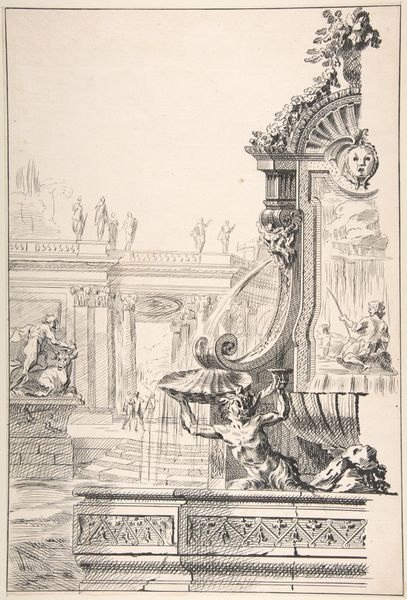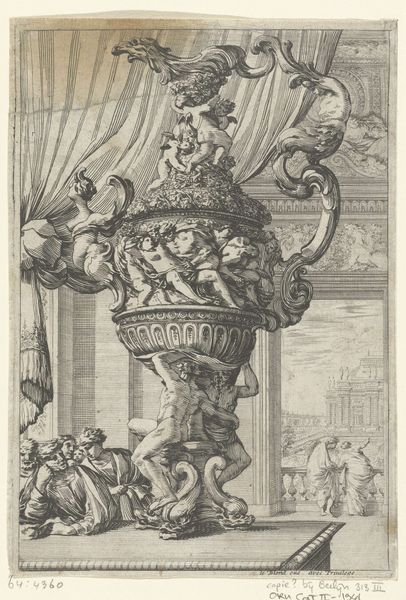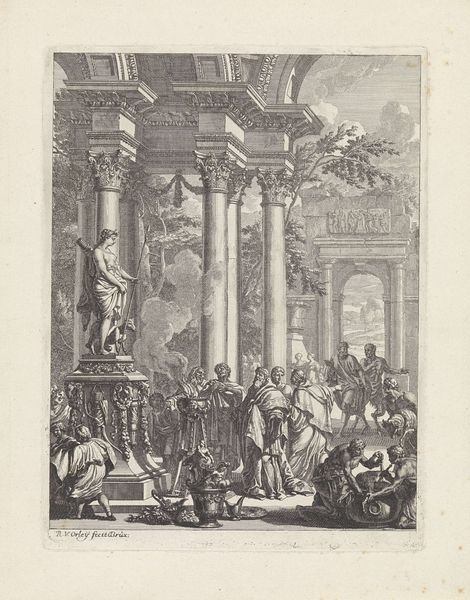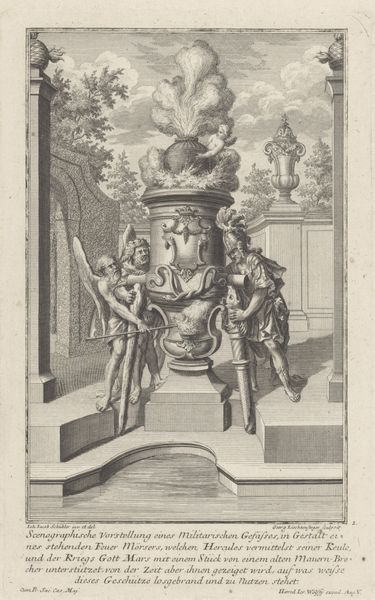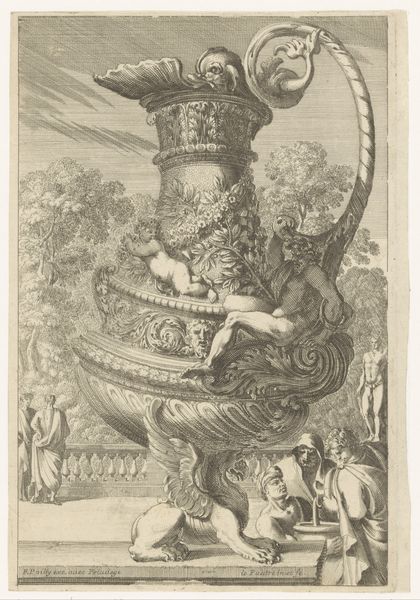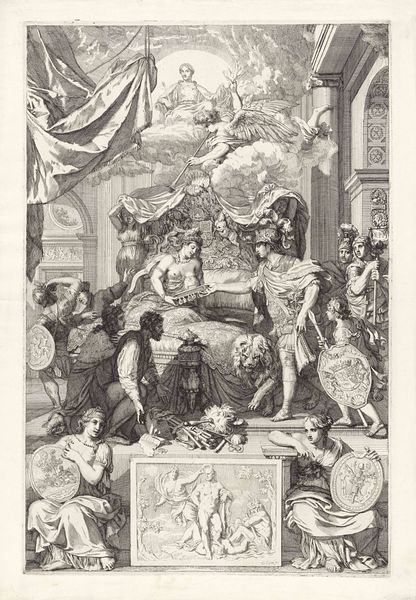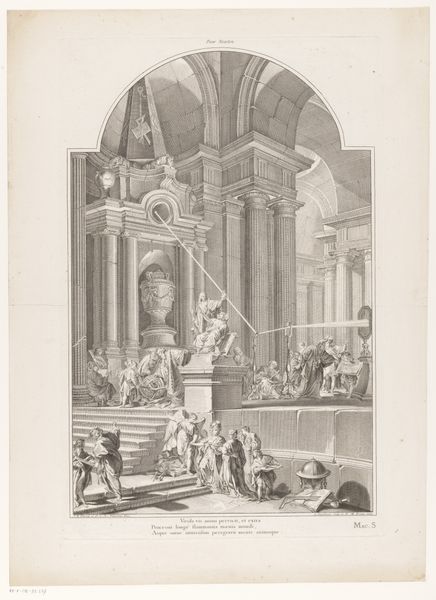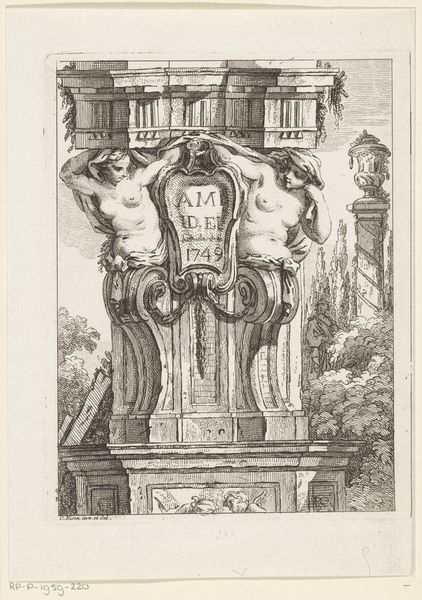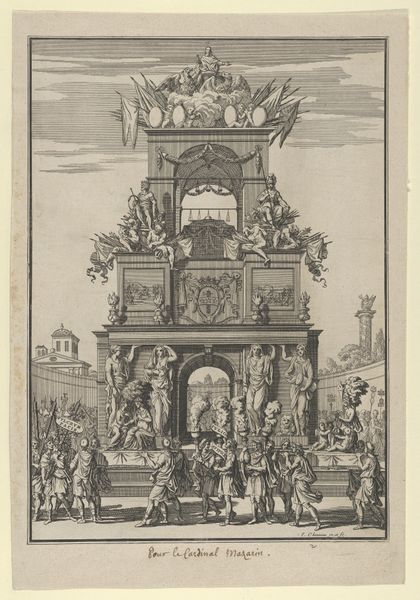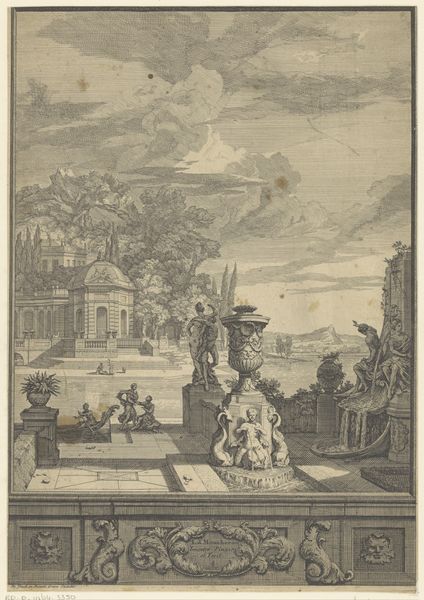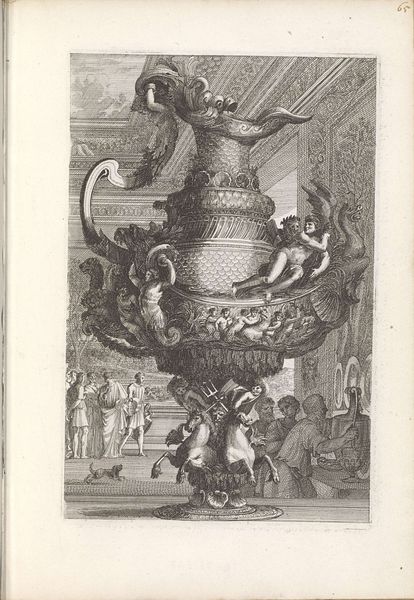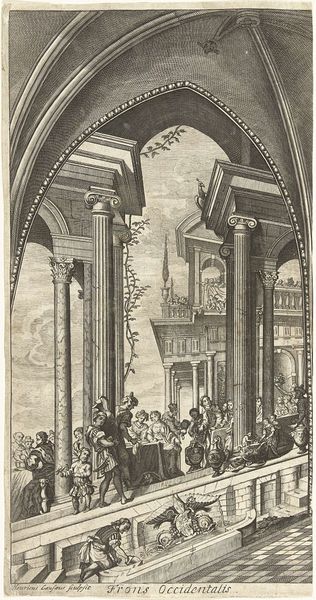
etching, sculpture
#
allegory
#
baroque
#
etching
#
landscape
#
figuration
#
sculpture
#
genre-painting
Dimensions: height 356 mm, width 235 mm
Copyright: Rijks Museum: Open Domain
Editor: This etching by Georg Sigmund Rösch, titled "Fountain with Man, Woman and Putti," was created around 1745. The baroque ornamentation is astonishing, and I find it almost overwhelming. There’s just so much detail packed in. How do you approach a work like this from a historical perspective? Curator: I think it’s crucial to understand how a piece like this functioned in its time. Baroque art, especially depictions of lavish fountains and landscapes, often served as a display of power and wealth. Look at the idealized figures, the cascading water, and the architectural elements. This wasn't simply about aesthetics; it was about conveying a specific message of status. Do you see how the architectural backdrop enhances this message? Editor: Absolutely. It presents an idealized landscape, perhaps even hinting at ownership or control over the environment. So the patrons of this kind of art... they wanted to demonstrate influence? Curator: Precisely! Etchings like this made such imagery accessible to a wider audience, even beyond the direct sphere of influence of the fountain's patron. They were instrumental in shaping social ideals and projecting a certain kind of authority. Consider how the proliferation of similar imagery through prints may have influenced the landscape designs and cultural aspirations of emerging elites. Editor: That's a fascinating way to look at it. It moves beyond simply appreciating the artistry and gets into the political implications. Were there any particular artistic traditions that Rösch might have been engaging with? Curator: Yes, absolutely. He's clearly drawing from both classical and contemporary sources – think of the influence of Italian garden design on wider European tastes, filtered through the lens of courtly spectacle. The scale of ornament and the subject put me in mind of the gardens at Versailles, as they influenced design across Europe. Editor: That makes perfect sense. I guess I had been initially focusing on the art itself, rather than the wider world it inhabited. Curator: Exactly. Art exists within, and often reflects, power structures. Exploring this gives us so much greater understanding. Editor: That is such a helpful perspective, and I’ll definitely remember it as I examine more art. Thanks!
Comments
No comments
Be the first to comment and join the conversation on the ultimate creative platform.
